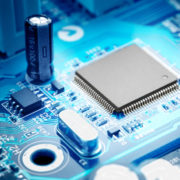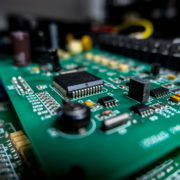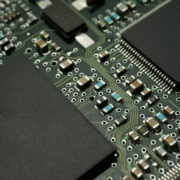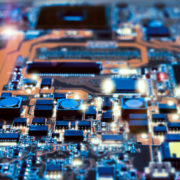SOC for Wearables: Miniaturization, Power Efficiency, and Performance Enhancement
The rapid advancement of wearable technology has been driven by the development of sophisticated System-on-Chip (SoC) solutions. These compact, integrated circuits are pivotal in meeting the unique demands of wearable devices. This article delves into the critical aspects of SoC design for wearables, highlighting the challenges and innovations shaping this dynamic field’s future.
SOC Miniaturization: The Key to Wearable Innovation
One of the primary challenges in developing SoCs for wearables is achieving significant miniaturization. Wearable devices require extremely small form factors to ensure user comfort and device functionality. SoCs integrate multiple components, including processors, memory, sensors, and communication modules, onto a single chip. This integration reduces the device’s overall size, enabling more compact and lightweight designs.
Advanced fabrication techniques, such as FinFET and FD-SOI, are crucial in achieving the desired miniaturization. These technologies allow for the creation of smaller transistors that can be densely packed within the SoC. This results in increased performance and reduced power consumption. Additionally, using 3D packaging and System-in-Package solutions further enhances the miniaturization capabilities by stacking multiple chips in a single package, saving space and improving device aesthetics.
Power Efficiency: Extending Battery Life
Power efficiency is another critical consideration in the design of wearable SoCs. Given their limited battery capacity, optimizing power consumption is essential to extending battery life and ensuring longer usage between charges. SoCs are designed with various power-saving techniques to achieve this goal.
Dynamic voltage and frequency scaling are widely used in SoC design to adjust the power consumption based on the workload. By dynamically adjusting the voltage and clock frequency of the processor, the SoC can operate efficiently under varying conditions, conserving energy when full performance is not required. Additionally, advanced power management units within the SoC can intelligently manage power distribution to different components, shutting down or putting them into low-power states when not in use.
Innovations in low-power wireless communication protocols, such as Bluetooth Low Energy and Near Field Communication, also contribute to power efficiency. These protocols enable seamless connectivity while consuming minimal power, ensuring the wearable device remains functional for extended periods.
Performance Enhancement: Enabling Advanced Features
While miniaturization and power efficiency are crucial, performance enhancement remains a key driver in developing wearable SoCs. Users expect their wearable devices to deliver advanced features like real-time health monitoring, fitness tracking, and seamless connectivity with other smart devices. To meet these expectations, SoCs must provide robust processing power and efficient data-handling capabilities.
Integrating AI and ML accelerators within the SoC is a significant trend in performance enhancement. These accelerators enable real-time data analysis and processing, allowing wearable devices to offer personalized insights and recommendations to users. For example, AI-powered health monitors can analyze biometric data to detect anomalies and provide early warnings, enhancing the overall user experience.
Furthermore, incorporating advanced sensor fusion technology within the SoC enables the seamless integration of data from multiple sensors, such as accelerometers, gyroscopes, and heart rate monitors. This fusion of data enhances the accuracy and reliability of the information the wearable device provides, enabling more precise tracking and monitoring.
SOC Conclusion
The development of SoCs for wearables is at the forefront of technological innovation. By leveraging advanced fabrication techniques, power-saving strategies, and cutting-edge performance enhancements, SoCs are enabling a new generation of wearable technology that meets consumers’ ever-evolving needs. As the wearable market grows, SoC advancements will play a pivotal role in shaping the industry’s future.
Learn more about Liner MicroSystems by clicking here!
Linear MicroSystems, Inc. is proud to offer its services worldwide as well as the surrounding areas and cities around our Headquarters in Irvine, CA: Mission Viejo, Laguna Niguel, Huntington Beach, Santa Ana, Fountain Valley, Anaheim, Orange County, Fullerton, and Los Angeles.











